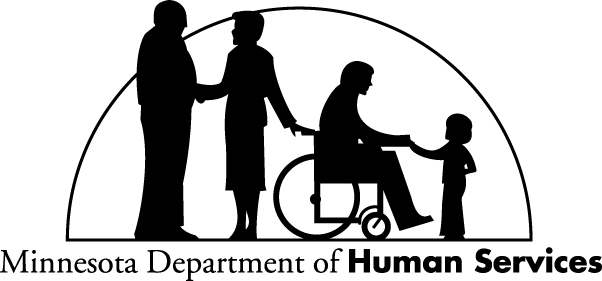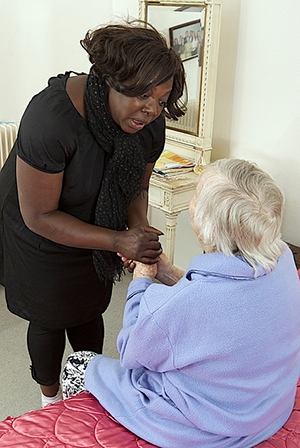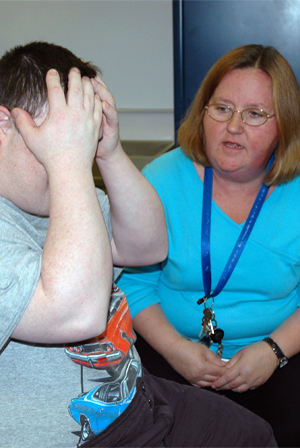Lesson #3: Prohibited and Allowed Procedures in the PSR
Lesson #3: Prohibited and Allowed Procedures in the PSR

Lessons in the PSR Course:
There are five lesson in this course.
- Introduction to the Positive Supports Rule (PSR)
- Positive Support Strategies and Person-Centered Planning
- Prohibited and Allowed Procedures in the PSR
- The Roles of Professionals in the PSR
- Documentation and Reporting in the PSR
Lesson #3 Description and Learner Objectives
Lesson #3 Description: This lesson provides a quick overview of approaches and strategies that are allowed and not allowed in the Positive Supports Rule and when supporting someone who uses interfering behavior.
After completing this module, you will be able to:
- Identify approaches that are permitted by the PSR when supporting people with interfering behavior.
- Identify approaches that are prohibited by the PSR when supporting people with interfering behavior.
- Know when emergency use of manual restraint is allowed.
Responding to Behavior
If a person’s behavior changes (either suddenly or gradually) the first thing to do is to check for obvious reasons. This may include:
- Assessing the environment (is something annoying, frightening, or exciting the person?)
- Assessing physical health (are they sick, injured, in pain?)
- Assessing mental health (are they demonstrating known symptoms that indicate a change in status? Has something happened that is upsetting or a trigger?)
Underlying illnesses and conditions must be clarified and handled. Pain, disorientation, or similar issues need to be resolved as quickly as possible.
Directions: Listen to the voice clip on this page before going on.
Functional Behavior Assessment
In the PSR an FBA must be a well-rounded, multi-component assessment. A FBA requires direct observation and the development of a hypothesis statement about the purpose of the interfering behavior. It requires a review of environmental factors to see what is happening in the social environment, an assessment of a person’s internal physical and mental wellbeing and an assessment of quality of life indicators. It is very important that before deciding how to approach an interfering behavior, that these areas are all reviewed in order to make a well-rounded, multi-component support plan based on the function of the interfering behavior. The resulting plan may include only positive supports to help the person. Or it may include time-limited use of a limited set of prohibited procedures, but only if appropriately approved. (See Positive Support Transition Plan in another lesson.)
Permitted Procedures (9544.0050)

Physical contact or instructional techniques using least restrictive alterative possible to:
- Calm or comfort a person
- Protect a person at risk of frequent falls
- Facilitate a person’s completion of task or response when person does not resist or minimally resists
- To block or redirect a person with less than 60 seconds of contact
- To redirect behavior not posing a serious threat with less than 60 seconds of contact
Permitted Procedures (9544.0050)
- Positive support strategies (person-centered, individualized, strength based, skill building)
- Positive verbal correction (clarifying, informing, acknowledging)
- Temporary withholding or removal of objects being used to hurt self or others (returned as soon as possible, not held as a punishment or to control)
- Mechanical devices for medical conditions (such as safety straps on mobility devices)
- Emergency use of manual restraint (immediate risk of serious harm in which there is no other option for safety)
Restrictive Interventions
- Subp. 49. Restrictive intervention.
- “Restrictive intervention” means prohibited procedures identified in Minnesota Statutes, section 245D.06, subdivision 5; prohibited procedures identified in part 9544.0060; and the emergency use of manual restrait.
Interventions Prohibited by the PSR
- Chemical restraint
- Mechanical restraint
- Manual restraint – programmatic
- Seclusion
- Time out
- Aversive & Deprivation procedures
- Prone restraint
- Faradic shock
- Speaking to a person in a manner that ridicules, demeans, threatens or is abusive
- Using physical intimidation/shows of force
- Denying or restricting a person’s access to equipment and devices such as wheelchairs, walkers, hearing aids and communication boards that facilitates a person’s functioning
- Using painful techniques
- Hyperextending or twisting a person’s body parts
- Tripping or pushing a person; Using punishment of any kind
- Requiring a person to assume and maintain a specified physical position or posture
- Using forced exercise
- Totally or partially restricting a person’s senses
- Presenting intense sounds, lights other sensory stimuli
- Using a noxious smell, taste, substance or spray
- Requiring a person to earn normal goods and services
- Using token programs that include response cost
- Using a person receiving services to discipline another person receiving services
- Using any action or procedure that is medically or psychologically contraindicated
Understanding Prohibited Interventions
Punishment of any sort is NOT allowed. Examples of ways people have been punished in the past include:
- Loss of access things that are their right (to their own possessions, time with family, or basic needs –like food or water)
- Forced to exercise or hold positions
- Threatened, yelled at, or intimidated
- Tied up, locked up, handcuffed, etc.
- Teased or nagged
Many of the specific interventions from the PSR listed on the previous page are there because people have experienced these. However, it’s most important to know that regardless of how mild the approach, punishing people for their behavior is not an allowed teaching strategy in DHS licensed services in Minnesota.
To hear more of Helen’s story or from other self-advocates you can go to:
Understanding Prohibited Interventions
Be very clear on the difference between treatment and control.
Medications, electroconvulsive therapy, splints, and voluntarily taking a break in a private spot are all approaches that can be supportive or therapeutic. They can also be used to control people inappropriately. People should not be denied access to helpful treatment and supports that they chose. However, they must be in control of the intervention, have clarity on the risks and benefits, and make an informed choice. It must help them achieve their goals, experience more opportunities, and live life more fully. Treatments and approaches must be evidence-based and supervised by a qualified professional. The person must be free to discontinue the intervention as they desire, unless under a court order.
When people have limits in their ability to communicate and self-determine, professionals must go the extra mile to review and document each decision made. They must frequently revisit the impact on the person to ensure all interventions are truly medically necessary, preferred by the person, and useful to them.
Emergency Use of Manual Restraint (EUMR)
245D.02 Subd. 8a.Emergency use of manual restraint.
“Emergency use of manual restraint” means using a manual restraint when a person poses an imminent risk of physical harm to self or others and is the least restrictive intervention that would achieve safety. Property damage, verbal aggression, or a person’s refusal to receive or participate in treatment or programming on their own do not constitute an emergency.
EUMR is considered restricted, not prohibited – meaning its use is restricted to certain conditions.
It’s important to be trained in proper techniques for restraint and even more so in effective strategies for preventing these types of situations.
Avoiding EUMR and Other Crises

Use of restraint, even in an emergency, will include documentation and oversight. Keep in mind that not attending to safety will also be an issue. So will repeatedly calling for emergency response services--such as the police--to intervene. Any repeated crisis indicates a problem in how a person is being supported. It’s important to take steps to look at the issue and get the right professionals involved. It can be easy to get discouraged, but with the right support, many people with significantly problematic behavior have learned new ways of behaving without the use of restrictions and restraints.
Lesson #3- Check Your Understanding & Review
-
A permitted procedure means a procedure that is permitted but only with professional oversight.
- True
- [correct] False
-
A prohibited procedure, such as time out, cannot be used in a licensed service unless there is a direct approval from the Commissioner of DHS.
- [correct] True
- False
-
Restraint, time out, and any procedure that is used to punish, control, or demean a person are prohibited.
- [correct] True
- False
-
Giving someone a psychotropic medication is a prohibited procedure.
- True
- [correct] False
-
Emergency Use of Manual Restraint is acceptable only when a person’s health and safety, or that of others, is immediately and seriously at risk and there are no other options for managing the situation.
- [correct] True
- False
Lesson #3 Conclusion
- People with disabilities and support needs have been subjected to many unfair, painful, demeaning and dangerous practices in the past. The PSR clarifies that these approaches will not be allowed in licensed services in Minnesota.
- Procedures that are permitted are ones that support people to gain new skills without trying to control or punish them.
- There is a long list of prohibited procedures in the Positive Supports rule. Most are not allowed. Some can be used with in a time-limited way with specific permission.
- In the event of a very serious crisis in which there is no other way to keep people safe, emergency use of manual restrain may be used. You are still responsible for ensuring people’s safety and providing as much dignity in the process as possible. People who are in crisis often are not receiving enough support for the right things. More effort should be made to help identify what will work for the person. A Functional Behavior Assessment should be completed as describe in the PSR.
There is a test linked to this lesson. You must take the test to receive credit for completing the lesson. Once you have finished reviewing this lesson, close the pop-up window and go back to your lesson assignment list. Then click on the title of the lesson you just completed, you will be taken to the welcome page again. A blue button "Take the Test" will have appeared. Click on it to take the test. Once you complete, submit, and pass the test, the lesson will be credited as complete.